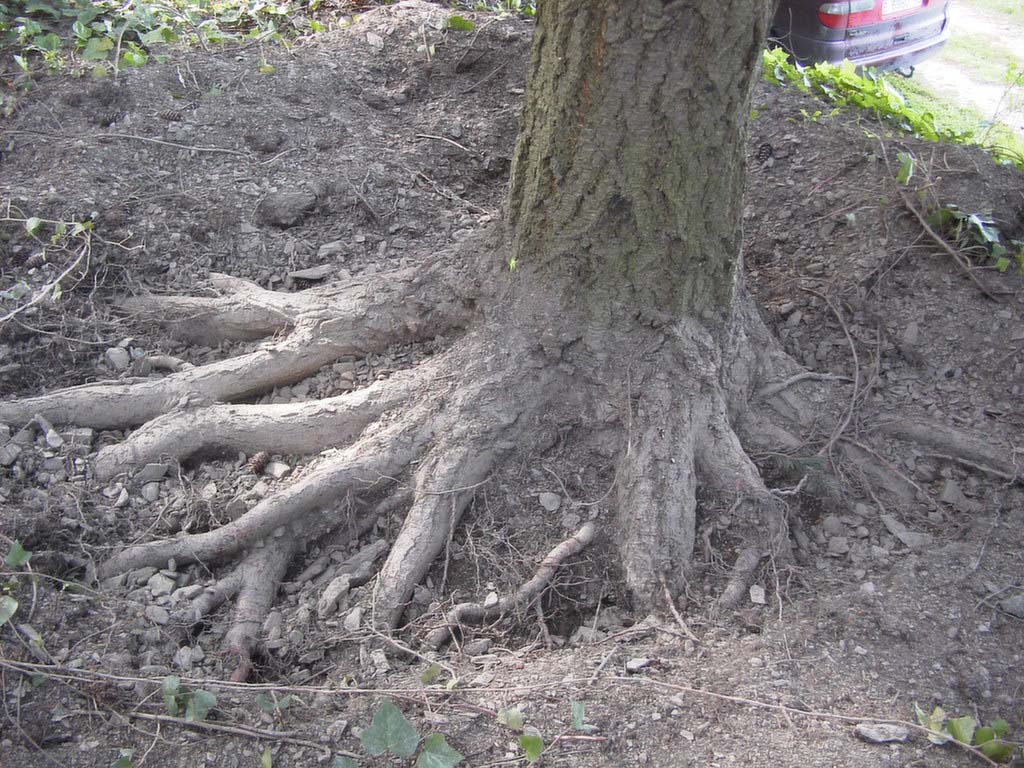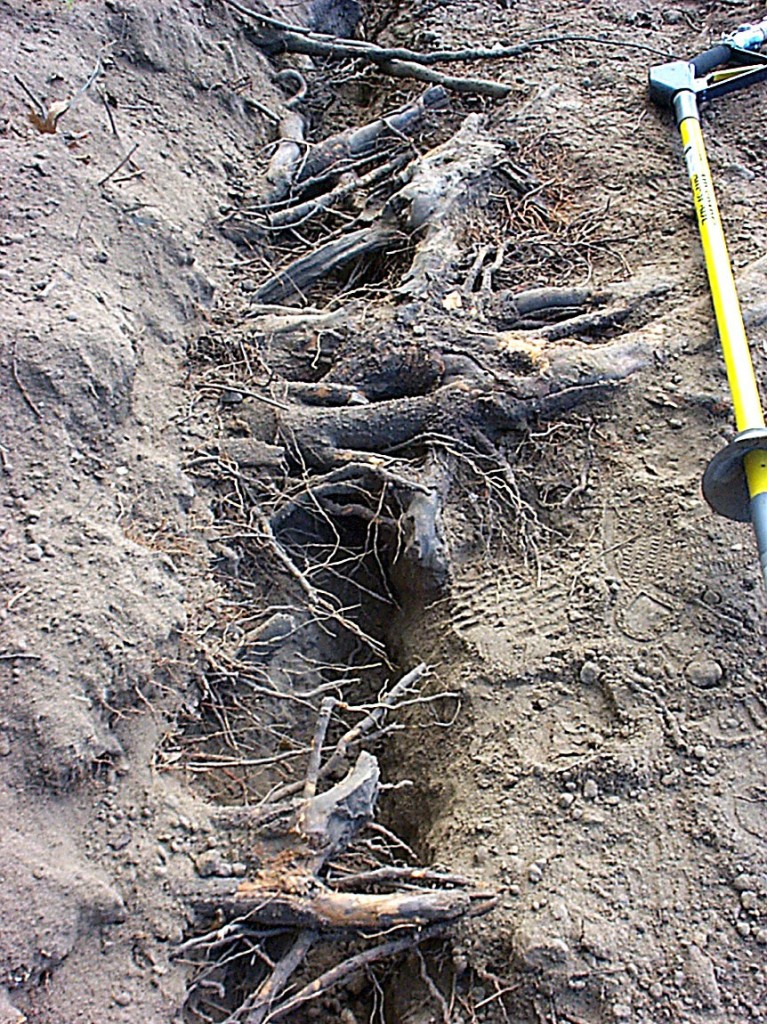Well, here are some more friends that we made at New England Grows this year.Tom Tremblay (president) and Eric Mills (vice president) of Air Spade are a couple of great guys and they have an amazing tool for many tree care operations.
A vast majority of tree health problems begin in the roots. So the challenge is, the roots are the part of the tree that cannot be seen (in case you didn’t know that). What is an arborist to do? If proper diagnosis necessitates a peek at a trees root system, and unearthing the roots will cause unmerited damage to the trees roots….hmmm…?
That’s why this tool has become such a benefit to our tree care operations here at Forest Keepers.

This root collar excavation was performed with the Air Spade. As you can see from the soil line on the trunk, this tree was planted to deep.

Getting a window into the root system of a tree is something that arborists have not really been able to do until now.
Here is one of our jobs that we couldn’t have done without the use of the Air Spade. We were called in to care for a mature Copper Beech tree that had become the site of a new construction project. The soil around the root zone of the tree was severely compacted from heavy foot traffic and construction machinery. One outstanding characteristic of Beech trees is their intolerance for soil compaction. OUCH!!! No problem, right? Just aerate the soil… but how? Of coarse the old fashioned rototiller would do the trick and fluff that soil up right away. The only problem is that this would chop the roots of this majestic tree into a useless mess. This is where the Air Spade is invaluable. The way that this thing works, we are able to fluff up the soil and add some nice organic material into the topsoil without damaging even the smallest root hairs.

When we arrived at this job site, the root zone of this Beach tree was seriously compacted from all of the construction activity. Nice wall though, huh? The new house ain’t that bad either.

The soil was easily loosened with the use oif the Air Spade. Then we introduced some compost and bio-stimulants into the soil and applied a 3 inch layer of organic mulch over the root zone.
This tool is a great addition to our tree care service. Our soil management and tree fertilizing program wouldn’t be the same without it! Having access to the root system of a tree without harming the roots has revolutionized the tree care industry. Here are just some of the tree care operations that can be successfully conducted with this tool.
- Aeration
- Locating roots for utility line installation
- Radial Trenching
- Root collar excavation
- Root damage investigation
- Root locating for pruning
- Soil compaction reduction
- Transplanting / bare rooting
- Vertical mulching
- Checking the adequacy of the root structure before climbing the tree for pruning
- And arborists continue to find new and innovative uses for the Air Spade. ( creative bunch, those arborists)
I’m happy to tell you that this Beech tree is flourishing and shows no signs of construction stress 4 years later.


Comments
I have had several of my newly planted (and poorly planted — that is, too deep) trees opened up with the air spade, and what a difference it makes!! The year after the air spade excavation these little trees took off and added growth and just looked much happier. Bartlett Tree Experts did the work here (two red maples, a very young redbud, a stewartia and a dogwood). It was quite an operation to watch. The trees seemed to love it though!
Yeah it’s amazing how trees respond to having their root system aerated. I have found that during the process it is best to add some compost to the soil, as it seems to keep the soil from compacting down again after the next rain. Rescuing tree s that have been planted to deep is a good use for this tool as well.
We have used air excavation to dig around tree roots on a number of jobs. It works well when there is soft ground like in this job in Austin, TX :
video case study: http://www.tex-rex.com/air-knife/
Keep up the good work.
Great post. This tool seems it be quite helpful when performing a root excavation. Thanks for sharing this.
Pingback: Tree Preservation in Concord | Tree Care Tips
The fact that most problems begin in the roots is crazy to think, but trees are an art of their own. Great post